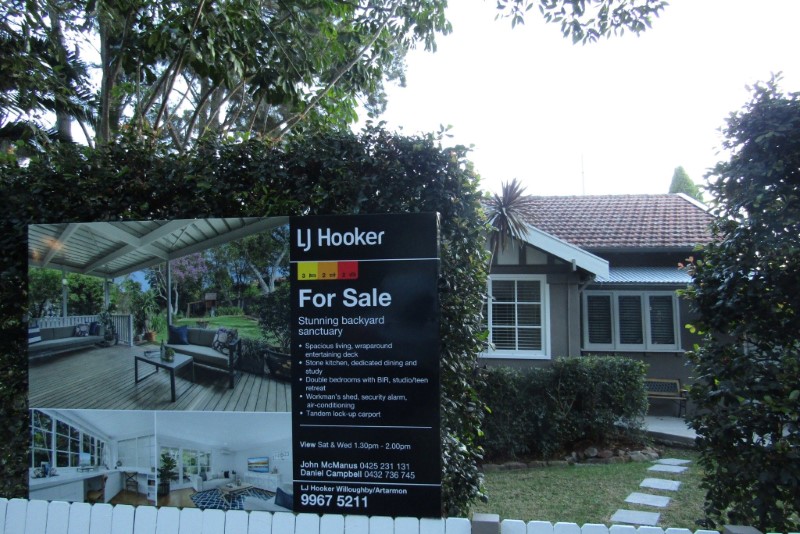According to the CoreLogic Home Value Index, dwelling values have recorded some substantial falls over the 12 months to January 2019. Four of the eight capital cities have recorded dwelling value falls while four of the seven rest of state markets have also experienced declines.

Nationally, dwelling values have fallen by -5.6% over the 12 months to January 2019 which is their largest annual fall since March 2009. Combined capital city dwelling values were -6.9% lower over the past year while combined regional markets saw much more moderate value falls of -0.8%. For the combined capital cities, the -6.9% fall is the largest since February 2009 while the -0.8% fall across regional markets is the largest since October 2012.
The recent declines in dwelling values are very much a different situation to the one that has played out over the past 20 years.

Over the past 20 years, national dwelling values have increased by 197.4% with the combined capital cities recording stronger total value growth (212.4%) than the combined regional markets (150.3%). Looking at the individual capital cities, Melbourne has recorded the greatest value gains over the period (274.6%) while Darwin value growth has been the most moderate (38.4%). The weak growth in Darwin has been driven by values falling by almost 26% since peaking in mid-2014. Across the individual rest of state regions, growth has been strongest in regional NSW (185.6%) and weakest in regional WA (77.5%). Darwin and regional WA were the only two major regions of the country where values have not doubled over the past 20 years.
Within the past 20 years there have been many housing cycles so the following graphs will show how each region has seen values change over the 20 years within five year increments.
The five years to January 2004 was the strongest five-year period for value growth over the past 20 years, with national dwelling values increasing by 80.2%. Over the period, the total growth in values across the combined capital cities (79.6%) and the combined regional markets (82.0%) was remarkably similar. In fact, it was also the only five-year period in which value growth was stronger in regional markets than in capital cities.

Over the five years to January 2004, capital city value growth was greatest within Canberra (110.9%) and weakest within Darwin (-3.9%). While values in Darwin fell, the next weakest growth in capital city values was Perth (63.5%). Across the regional markets, values saw little growth over the five years in regional WA (24.4%) and regional NT (28.9%) while elsewhere value growth was quite strong with values doubling in regional NSW (108.8%).
Following the strong value growth between 1999 and 2004, the growth in dwelling values over the five years to January 2009 was generally much more circumspect. Over the period, national dwelling values increased by 14.9% with a 15.2% rise across the combined capital city markets and a 14.2% increase throughout the combined regional markets. While the headline figures show little growth, it was quite a different story within different regions with some of the smaller housing markets experiencing big gains.

Across the individual capital cities, Perth (52.3%) and Hobart (57.1%) recorded the strongest value growth over the five years to January 2009. Sydney was the weakest capital city market for value growth over the five years with values falling by 4.6%. In regional markets, regional WA was booming on the back of the mining boom with values increasing by 80.9% over the five years. Although regional NSW recorded the strongest value growth over the previous five years, it was the weakest market during this period with values falling -3.4%.
The five years to January 2014 marks the period following the GFC and saw the mining boom come to an end. Low interest rates and market stimulus saw values rise 20.3% nationally during the five years. The growth in values over the period was almost entirely driven by the combined capital cities (25.3%) with very little value growth across he combined regional markets (4.8%).

Across the capital cities, values growth in Sydney (36.5%) and Melbourne (32.3%) was much stronger than elsewhere with Brisbane (5.0%) experiencing the weakest growth. In regional markets, values declined by -2.0% over the five years in regional Qld while regional NT (30.2%) experienced the greatest increase in values over the period.
Over the most recent five years, national dwelling values have increased by 19.4%. The combined capital cities index has increased by 20.6% while the combined regional market index is 14.9% higher.

Across the individual capital cities, Perth (-15.6%) and Darwin (-24.4%) have recorded large falls while Hobart (35.1%) has experienced the strongest value growth. In the regional markets, values have fallen in regional SA (-1.1%), regional WA (-22.6%) and regional NT (-7.3%) while regional NSW has recorded the largest value increase (28.2%).
While past performance is certainly not an indicator of future performance, the data shows that over the past two decades most regions have seen some substantial increases in dwelling values. The data also shows that over five year increments, the best regions for growth in a given five-year period are typically the weaker areas for growth over the following five years. Given substantial growth over recent years in markets such as Sydney, Melbourne and Hobart that may provide some insight into the performance of these cities over the coming years.
Of course, the housing market has a number of headwinds that have not been seen for some time. Throughout most of the past 20 years, credit has been becoming easier to access, since late 2014 credit has increasingly become harder to access. Furthermore, ongoing strong value growth in Sydney, Melbourne and Hobart has seen housing affordability rapidly deteriorate over recent years. Finally, economic conditions outside of NSW and Vic have tended to be quite weak over recent years which has curtailed housing demand in these markets.
